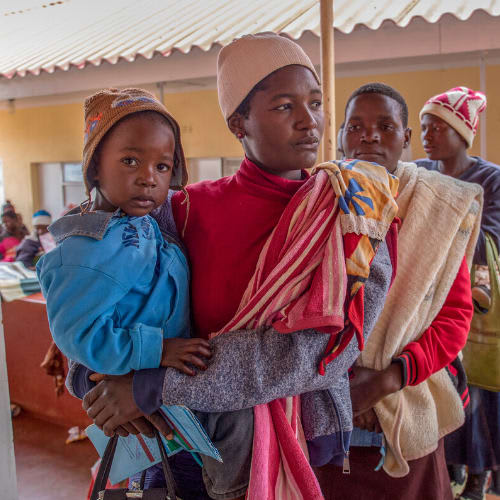From the Ground Up

To fuel progress in global development, we need catalysts that cut across multiple challenges and support multiple development interests. There is a widespread understanding among decision-makers in low- and middle-income countries that high-performing primary health-care systems play that catalytic role. These systems are central to reaching global and country-specific goals, achieving universal health coverage, and meeting the majority of individual and community health needs before they become emergencies. A healthy population in turn sets the stage for gains in education, economies, and peace and security.
Providing sexual and reproductive health services in the context of primary health care is a long-established principle and practice. The 1994 International Conference on Population and Development (ICPD) Programme of Action called for ensuring access to reproductive health through primary health care. Similarly, a 2008 UNFPA publication stated that achieving progress towards sexual and reproductive health and rights depends on a strong and functional health system in every country, especially at the primary and first referral levels.
With respect to HIV, tuberculosis, and malaria, the 2006 Abuja Call for Accelerated Action Towards Universal Access called for the promotion and integration of access to prevention, treatment, care, and support in primary health-care services. High-performing primary health-care systems enable countries to maximise the impact of core investments in programmes to defeat these and other infectious and non-communicable diseases. For example, primary health-care systems can be the basis for the scale-up of essential HIV and AIDS services in hard-to-reach areas and among underserved populations.
Unfortunately, despite broad global agreement on the value of robust primary health care, there is not a simple recipe to achieve it. Domestic financing and country ownership are critical elements, and it is time for countries to set priorities and budgets that explicitly aim to strengthen primary health-care systems, complementing the efforts of donors. Civil society also has a key role to play, not only holding decision-makers accountable but also working with them to develop strong systems that can be reached by all.
To enact policies and budgets that lead to measurable primary health-care improvements, however, decision-makers need better information about the components of high-performing primary health-care systems, particularly their poorly understood service delivery elements – such as the quality of care, and patients’ ability to access the system, and the degree of coordination among various care providers. A new partnership called the Primary Health Care Performance Initiative (PHCPI) seeks to address this gap in information, giving decision-makers the tools to adopt policies and practices based on evidence.
We are excited about PHCPI because it presents an opportunity for collaboration among diverse communities working to address other issues of global health and development. This is a chance to look ahead to where improvements to primary health-care systems can take us all in the future. We can rise above disputes over which health issues deserve the most attention, or what set of indicators gives us the best picture of a system’s health. We can harness data to make policy decisions about health care that are truly responsive to communities’ needs. We can unite around the opportunity to dramatically improve the health of millions of people by focusing on primary health care, the frontline of health in people’s communities.
This piece was originally published in The Lancet’s Global Health blog.
We are fighting back against the onslaught of harmful policies that discard reproductive rights.
Stay informed about the issues impacting sexual and reproductive health and rights.
